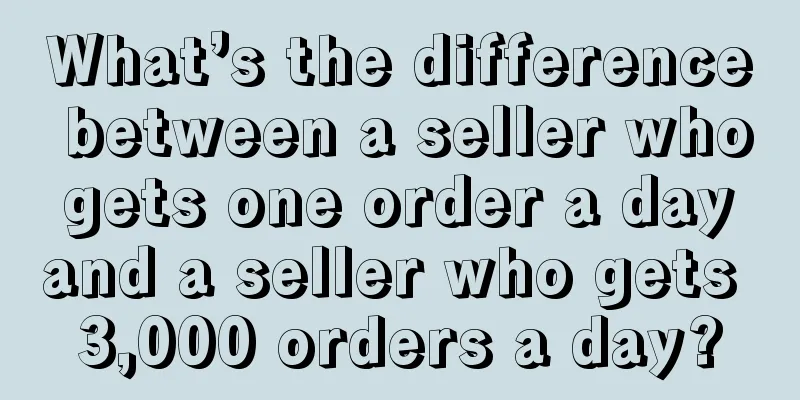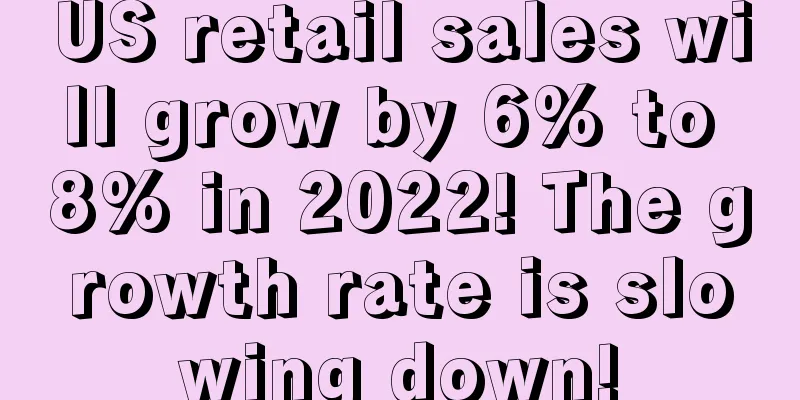Amazon and Walmart compete head-on in beauty and cosmetics market

|
BeautyMatter reported that the beauty and cosmetics category has proven to be one of the most resilient categories in the macroeconomic downturn. In the United States, the two major retail giants have been competing for the top spot in the beauty and cosmetics retail market for many years. In this process, the competition threshold of the beauty and cosmetics category market has been quietly raised, and consumer expectations are higher than ever before.
According to NielsenIQ data, in 2022, the total revenue of the US beauty and cosmetics retail market was US$90.2 billion, a year-on-year increase of 6.7%. In-store sales accounted for 62%, and e-commerce sales increased by 6.7% year-on-year. In the field of beauty and cosmetics, Amazon and Walmart have always had a similar market share in the United States. According to PYMNTS data, in the most recent quarter, Walmart's market share in this category was 5.9%, while Amazon's was 5.1%.
However, as to who will take the top spot in the future, the capital market prefers Amazon.
Morgan Stanley predicts that Amazon will surpass Walmart to become the largest player in the beauty and cosmetics category in 2025, with a market share of 14.5% and a scale of $180 billion. Walmart is expected to become the second largest retailer in the beauty category in 2025, with a share of about 13%.
Analysts believe that, first, Amazon has the largest share of the overall e-commerce market in the United States, which will account for 46.5% by 2025, which will drive sales growth in the beauty and cosmetics category; second, Amazon has larger search traffic, and most brands’ promotions on social media also direct traffic to Amazon; finally, Amazon’s Prime membership is large, and the digital experience is far superior to Walmart.
Nevertheless, Walmart’s growth in the beauty and cosmetics market cannot be underestimated. Its development path is different from Amazon’s, and each has different advantages. The tit-for-tat between the two continues.
Amazon focuses on online sales, targeting the high-end market
Looking back at the past 10 years, Amazon has been making efforts in the beauty and cosmetics category. First, it launched the high-end beauty and cosmetics market in 2013. In 2018, Amazon's share of the US beauty and cosmetics e-commerce market reached a new high of 36%, when department stores, grocery stores and drugstore chains were facing weak sales.
However, Amazon's problem is that its user overlap with high-end beauty brands Ulta and Sephora is still small, and users' minds remain on low-priced products. Due to different target groups and product positioning, high-end and luxury brands also stay away from Amazon, making it difficult to attract high-quality brands.
The pandemic changed that. As beauty retailers such as Sephora and Ulta faced store closures and delivery delays, many mid- to high-end brands began to consider Amazon and actively removed unauthorized sellers on the platform and maintained pricing. During the pandemic, Amazon became the main sales channel for offline beauty and cosmetics brands.
At the same time, Amazon also began to actively penetrate the beauty industry, sponsoring trade events and using an open checkbook to attract insiders. Amazon has also proved to be an important channel for improving customer acquisition efficiency and conversion, and many professional hair care, mass market and independent brands have begun to join Amazon.
Data shows that in 2022, health, personal care and beauty products were one of Amazon's fastest-growing categories, with sales of 1P sellers increasing by 23% and sales of 3P sellers increasing by 14%.
According to eMarketer, Amazon’s share of total e-commerce sales in five categories will increase slightly by 2024, with the largest growth in health and personal care. Amazon’s position in prestige beauty continues to grow, with approximately 100 million beauty category visitors per month, accounting for 12% of the prestige beauty market, according to WWD.
Walmart focuses on offline business and also targets high-end market
Walmart has been working hard in the beauty and cosmetics industry for many years. Today, Walmart is considered to have the widest brand selection and the most diverse products in the industry, and has become a partner of many well-known brands such as Bubble and Uoma.
According to Creighton Kiper, Walmart's current vice president of beauty, Walmart is committed to providing long-term appeal to brands, providing supply chain and marketing support to brands, and nurturing their development by launching these brands in 500-1,000 stores.
Walmart is also moving into the high-end beauty and cosmetics market.
In March 2022, Walmart doubled down on its beauty push, following Target x Ulta and Kohl's x Sephora, with a strategy to attract high-end beauty shoppers and a partnership with SpaceNK to launch a line called BeautySpaceNK. According to some of the participating brands, the partnership appears to be working.
Walmart has always attracted a large number of cost-effective consumers with its slogan of "everyday low prices", but its data shows that nowadays, wealthy consumers also frequently visit Walmart. Walmart plans to continue to expand its beauty and cosmetics category line to cover more price segments to meet the needs of consumers with different incomes.
Walmart does not break out sales by category, but total revenue for the first quarter and fiscal 2024 was $152.3 billion, up 7.6%. Same-store sales in the U.S. rose 7.4% in the first quarter, with e-commerce up 27%.
The battle for beauty product consumers will be a long-term one
As mentioned earlier, Amazon and Walmart are both moving into the mid- to high-end beauty products market. Although their respective strengths are different, their overall strengths are comparable.
In the field of e-commerce, Amazon's North American sales increased by 13% year-on-year in 2022 to $315.9 billion, accounting for most of the U.S. e-commerce market share. Walmart started late, but it has been targeting Amazon in its e-commerce layout. Its e-commerce sales also achieved a significant increase last year, and it is actively recruiting more third-party sellers to create a flywheel similar to Amazon.
From 2019 to 2022, both Amazon and Walmart have steadily increased their share of the U.S. e-commerce market. Amazon is dominant, accounting for about 44.9% of U.S. e-commerce sales in the second quarter of 2022, while Walmart only accounts for 5.4%. According to a recent consumer survey by ProsperInsights & Analytics, 61.8% of Americans said Amazon is the website where they buy products most frequently, while only 8.6% choose Walmart. However, Amazon's share has dropped from more than 66% in 2022.
Information disclosed to investors by Walmart's chief financial officer in April this year shows that American consumer expectations are changing, with consumers preferring multi-channel choices, convenience, value and selectivity, and omni-channel is becoming the choice of more and more consumers.
Compared to Walmart, Amazon has a shallow presence in the physical retail sector. Even after acquiring Whole Foods Market for $13.7 billion in 2017, Amazon still does not dominate the grocery industry, and without physical stores, Amazon cannot become a true omnichannel retailer.
On the other hand, Walmart has more than 4,700 stores in the United States, 90% of Americans live within 10 miles of a Walmart store, and provides online services to more than 140 million customers each week. Relying on its huge store network, Walmart can provide more flexible delivery methods.
At present, Walmart needs to catch up faster in the field of e-commerce. In addition, in the US market, TikTok, Temu, and Shein are also continuing to work on the third-party platform model, and all three have expanded many categories including beauty. In the field of beauty, the battle between Amazon and Walmart continues, and new competitors are also rising rapidly. In the future, this market is expected to become more and more competitive.
Editor✎ Ashley/ Disclaimer: This article is copyrighted and may not be reproduced without permission. |
<<: Shopify teams up with streaming platform Roku to launch shoppable TV ads!
Recommend
Patent complaint unsuccessful? You can read this article
Patent rights: There are three main types of pate...
Video verification breaks out again! Video appointment time is extended, will cheaters be caught?
In recent days, in the cross-border e-commerce cir...
LianLian International and Industrial Bank launch American Express RMB co-branded debit card to connect to various consumption scenarios at home and abroad
On March 28 , LianLian International, a one-stop c...
Nintendo sues Amazon sellers!
Nintendo of America has filed a lawsuit against a ...
This common word was registered as a trademark, and the seller was sued for millions of dollars!
Cree LED's XM-L Plaintiff: CreeLED, Inc. Case ...
New trend of live shopping: 61% of American consumers actively participate in live shopping
Recently, VTEX released a new study on live shoppi...
Which bidding strategy is recommended for new products on Amazon?
(Amazon provides three bidding strategies) 1. Dyn...
Hot selling case sharing! Cross-border sales break through bottlenecks, with half-year revenue of 6.6 billion
“ Ninebot took off in the first half of the year ...
What is a Letter of Credit (LC)? Letter of Credit (LC) Review
A letter of credit (L/C) is a document issued by a...
I changed my job this year and found that my boss is very reluctant to clear out the stock. When the market feedback of new products is not good, wouldn’t it be the smallest loss to clear out the stock decisively?
Anonymous user My C position The OP changed compan...
Stock prices fell collectively, and the market value of US retail giants has shrunk!
It is learned that according to the latest data fr...
Several common malicious operations of Amazon's competitors and how to deal with them
The full text has 3697 words and takes 16 minutes...
What is Brandwatch? Brandwatch Review
Brandwatch is a powerful social media tracking too...
How to find Amazon influencers to shoot product videos? How to drive traffic to product links?
How to find Amazon influencers to shoot product v...









